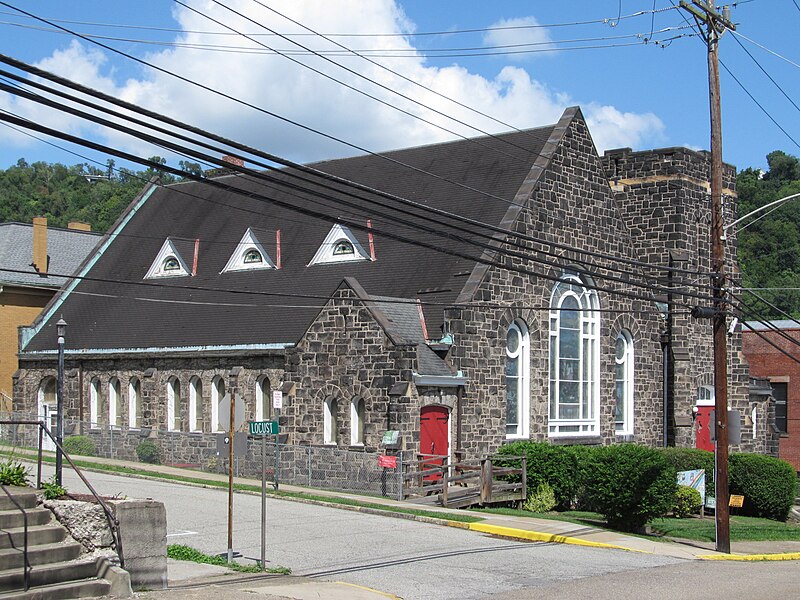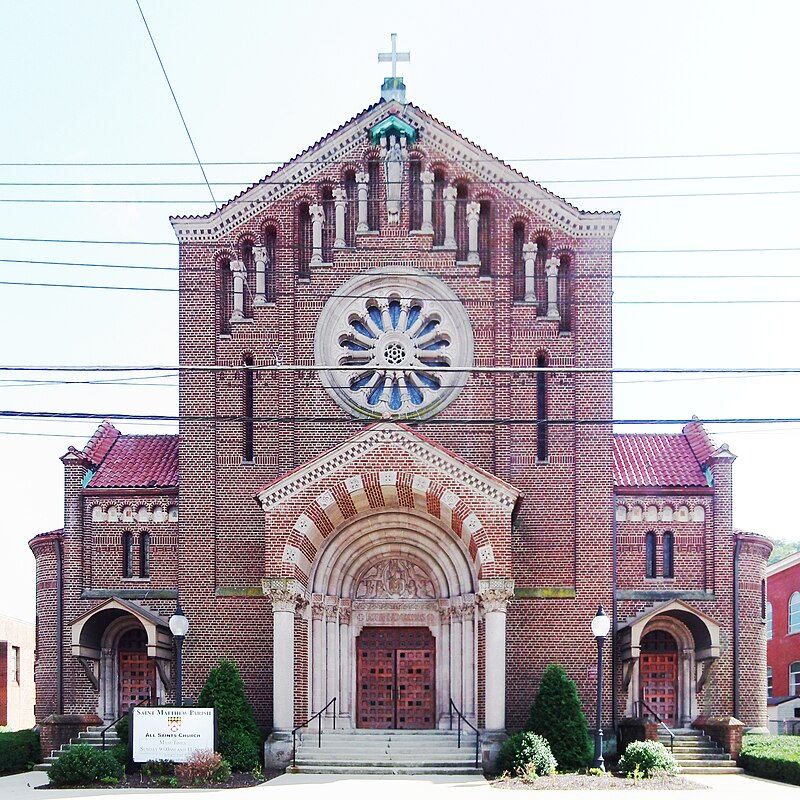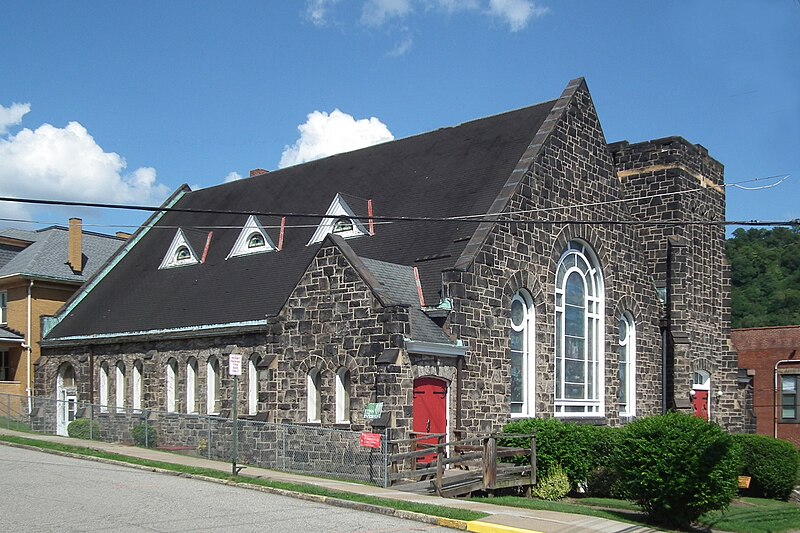
This beautiful little Romanesque church is one of our few remaining black stone churches; some day the stones may be cleaned, and the church will lose some of its character. It was built in the early 1900s—the land was purchased in 1906—and it has remained more or less the same since then, as we can see from an old postcard view.


The church was originally the First United Presbyterian Church of Etna; in 1918 it was renamed after the beloved founding pastor. A lush growth of utility cables mars this view, but the picture demonstrates a curious property of the tower: it has the ability to look taller or shorter than the main roof, depending on the angle of view.
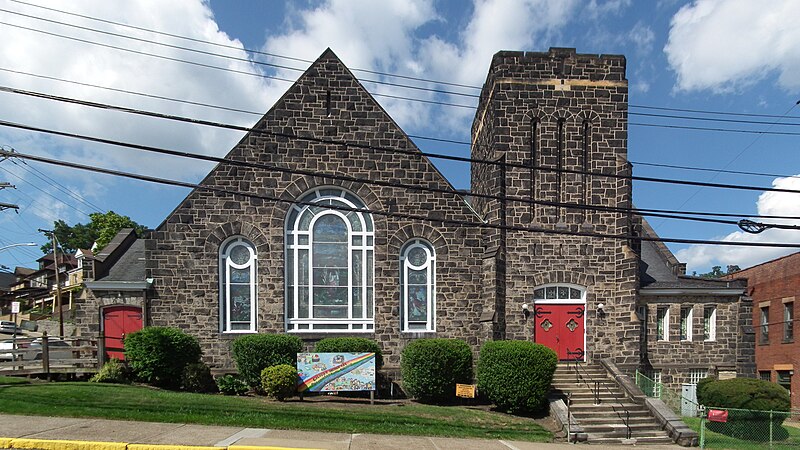
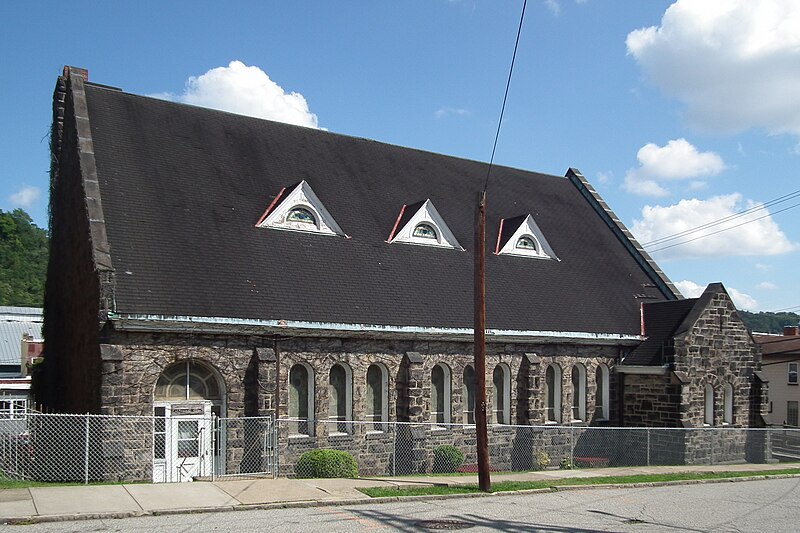
The steeply pitched roof and tiny triangular dormers remind us more than a little of H. H. Richardson’s Emmanuel Episcopal Church in Allegheny West:

We can be fairly sure the resemblance was intentional, since Richardson was still, twenty years after his death, by far the most famous architect in the Romanesque idiom. Note the buttresses on the Etna church, which Emmanuel lacks. That may also be a lesson learned from Richardson: the bulging walls of his Emmanuel Episcopal were not intended.
